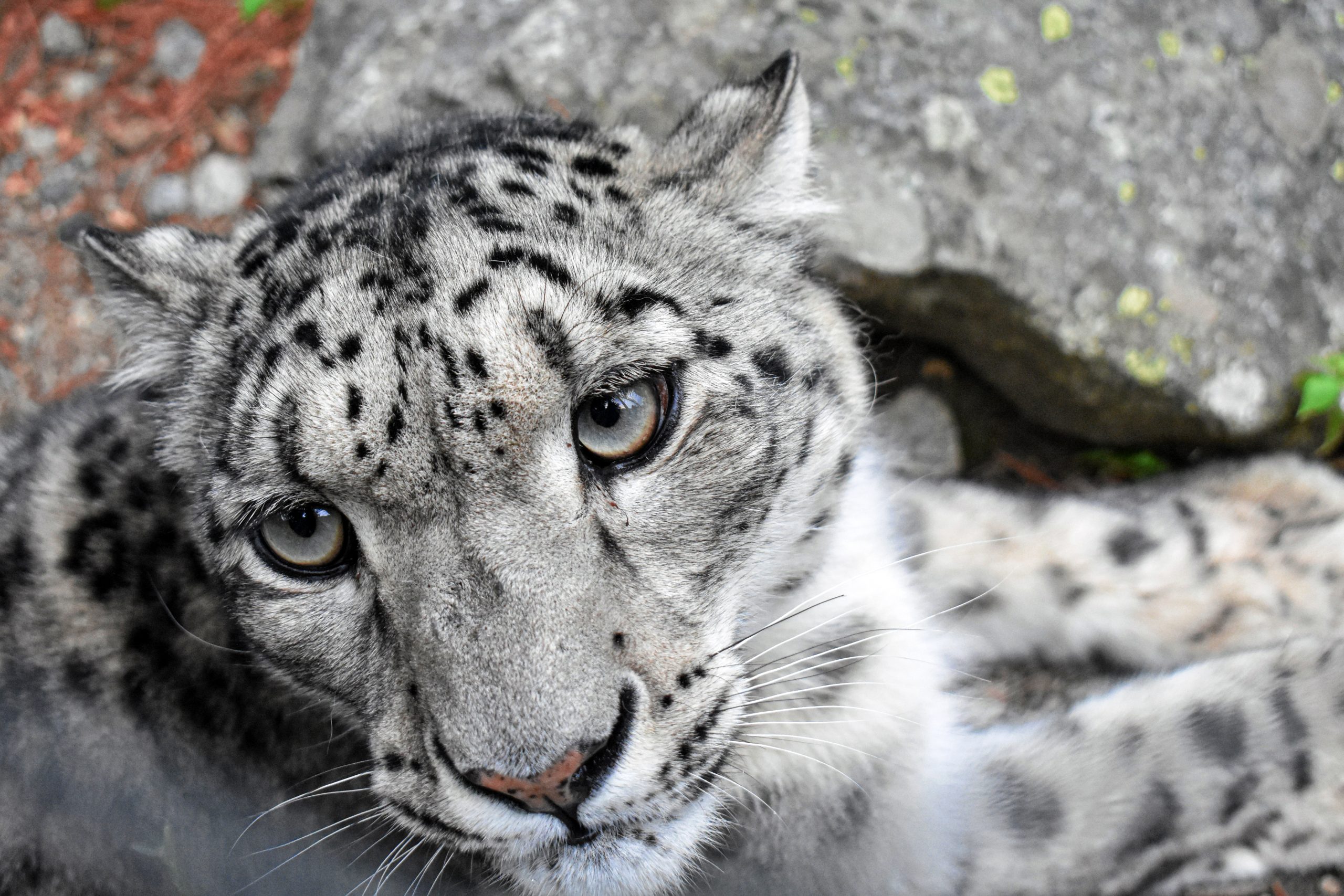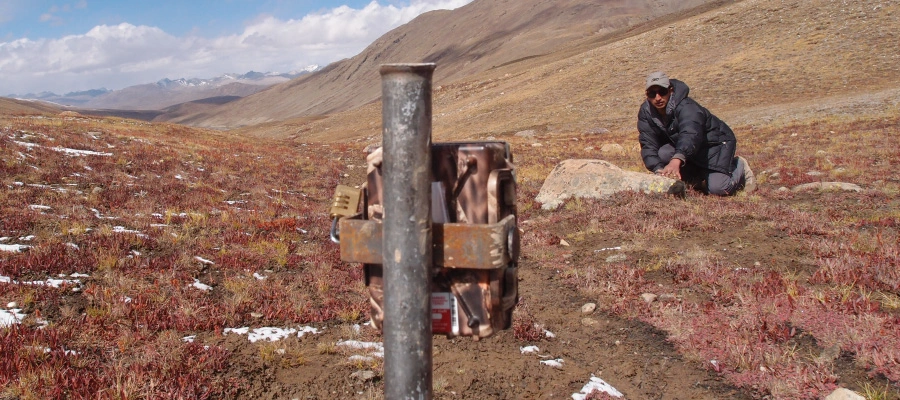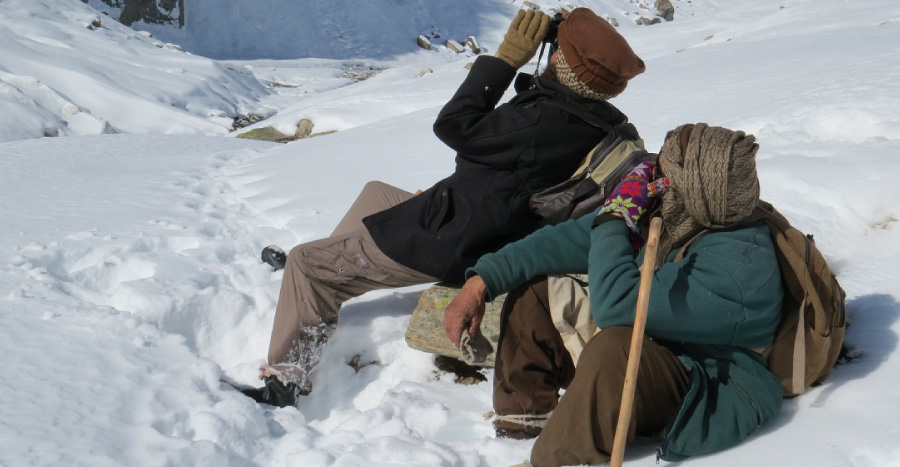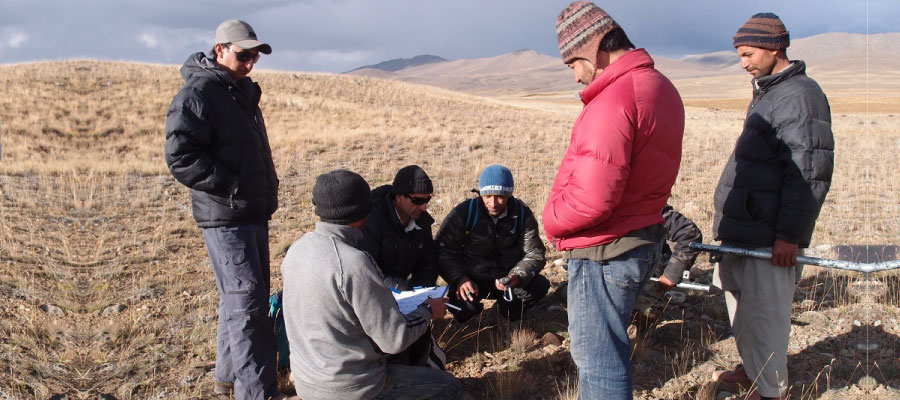For centuries, snow leopards and human populations have co-existed in the mountainous terrains of Central and South Asia. The natural habitats of snow leopards, therefore, are multi-use landscapes where agro-pastoral communities have grazed livestock for millennia. When communities lose their livestock to large carnivores such as the snow leopard resulting in great financial loss, a feeling of retaliation and resentment builds up in the community members who have no other means of income to support their families. Such incidents termed ‘human-carnivore conflict’, pose a significant challenge to conservationists.
Within SLF’s broader area of work in the northern areas of Pakistan, two such incidents came to light in July and August of 2020 respectively, further highlighting the need for intervention. The following paragraphs discuss these incidents in detail, highlighting simultaneously the positive things that came out of these tragic events, and how similar unfortunate occurrences can be prevented in the future.
Livestock Depredation in Rost Perpaik Watershed, Khunjerab National Park
On 17th July 2020, an attack by snow leopards resulted in the killing of nearly a hundred livestock in Rost Perpaik Watershed, located in the Barkhun area of Khunjerab National Park (KNP). As Snow Leopard Foundation began an investigation into the attack, the team learnt about the plight and sorrow of the herders who had lost their livestock overnight.
“Snow leopards are our enemy!”, said dejected Muhammad* wracked with stress due to the loss of his six slain animals. SLF’s team interviewed Muhammad and many other villagers like him after a family of four snow leopards left an array of dead livestock in the early morning hours.
“For a livestock herder, life is hard, we work all day and when we sleep it is like a half death as we sleep so soundly. It is then, when the snow leopards attack our months and years of toil and hard work. In a few moments, all our hard work is eaten up by these snow leopards and we are left with nothing,” Muhammad told the team almost brimming with anger and despair.
For Muhammad and the many other livestock farmers like him, attacks by snow leopards mean the difference between being able to feed, clothe and send their children to school. In the unforgiving terrain of Barkhun, these farmers traverse mountains and rivers to gather enough grass for their livestock and look forward to their payday when they can sell their livestock in the markets. However, when such large-scale attacks occur, an entire village’s livelihood is destroyed overnight. Under such circumstances, it is easy for a moment to share in Muhammad’s sentiment that snow leopards are indeed the enemies of herders who live in these areas.
However, the comprehensive and expansive work of SLF shows that this is not the case. The oftentimes maligned snow leopard is also a victim, just like the attacked livestock. Livestock attacks by carnivores such as snow leopards are becoming exceedingly common place as due to climate change, ecological disasters and hunting. Furthermore, as the usual prey of snow leopards such as ungulate populations continue to decline, snow leopards are forced to prey on livestock instead. By preying on herbivore creatures, snow leopards play a vital role in flora and fauna maintenance in the delicate ecosystem of mountainous regions.
In some cases, herders catch a snow leopard in the act and shoot the cat to protect their livestock. Other times, the damage is discovered the next day. Either way, tolerance for the predator suffers, and retaliation often appears to herders as their only option.
Interventions for mitigating human-carnivore conflict
The theory of prey-predator interactions suggests that the revival of wild prey populations can reduce predators’ dependence on livestock in these landscapes. This theory is backed by research as there is substantial evidence that shows that snow leopard attacks on livestock substantially decrease when there is a revival in ungulate populations. While conservation efforts to increase ungulate populations can be seen as a preventative conservation measure, it is an effort that can take many years. Thus, there need to be put other mechanisms in place to mitigate the human–carnivore conflict. SLF has been undertaking several initiatives in this vein in project areas with considerable success.
Some level of livestock depredation is inevitable in areas where livestock is the mainstay of the economy of local people. To counter these losses, SLF started a community-controlled livestock insurance program, which is a viable alternative to conventional compensation schemes. However, it is imperative to curb depredation as much as possible and for that predator-proof corrals are the most sustainable solution. Depending on the area, and the prevailing herding practices, predator-proofing can take on different forms.
In Pakistan, many communities have traditionally shared large corrals, holding the livestock of several families. These are usually solid constructions of stone and wood – but their doors and roofs are often unsecured.
Historically, these traditional structures were not prepared for protection from predators even though carnivorous predators have always existed, perhaps, because the raw materials and resources needed to build such structures were unavailable. Instead, these corrals were constructed to keep livestock cloistered and stationed in one place during the night.
Decades ago, herding was a family business, passed down from one generation to another and with it the customs and wisdom of the trade. These generational herds-people would never leave livestock animals to graze freely in the pastures without someone keeping a watch. In a community of herds-people, each family would take turns in keeping the livestock safe. At night they would intermittently shout to keep the carnivores away from those traditional pens.
Now, with modernization and livestock farming disintegrating as a generational business, professional shepherding families have quit the herding profession, adding to the loss of historical wisdom and trade secrets.
This is why SLF believes in the power of predator-proof corrals to save the lives of livestock and snow leopards while also saving the livelihoods of herdsmen like Muhammad.
Conventional corrals are about 3 feet high with loose stone walls simply meant to keep livestock together. They are not only easy access for snow leopards but they also collect easy prey for them in one place resulting in the mass killing of livestock. The low walls and open roof allow the cat to easily get into these pens. The mass killing of livestock inside the predator-prone pens can be subjected to the behavior of snow leopard. When the snow leopard penetrates the livestock pen, the animals panic and this triggers the killing instinct of the big cat. The snow leopard continues to kill the animals unless all the movement is ceased. The outcome is the infliction of huge economic loss.
Designed with the support of construction engineers, SLF corrals are not only predator-proof but are also built from sturdy and sustainable materials. The corrals are built by raising walls, adding barbed wire on top with a covering top of mesh-net. The walls are also reinforced with wood or concrete or steel to give stability and strength. Openings are defined and guarded by strong doors. These corrals are not just predator-proof but enclosed and sturdy enough to tolerate harsh weather too.
Metal window grates, solid wooden doors and poles and wire mesh, all cheap materials, for the roof can make all the difference here!
Snow Leopard Poachers Arrested from Hopper Valley, Gilgit-Baltistan, Pakistan:
On August 2, 2020, a hunter attacked a female snow leopard and her two cubs in a poaching incident in the serene valley of Hopper, Gilgit-Baltistan. A reliable source promptly reported the incident to the Parks and Wildlife Department, Gilgit Baltistan. With the help of the local community and social media, the department raided the area with the support of the police department and arrested the primary culprit Muhammad Saleem who was caught with a snow leopard skin. The cubs of the snow leopard, however, could not be found. During the investigation, he identified other individuals who had been his accomplices. In the follow up raids around the Hopper area of Nagar, all the other culprits were also arrested and identified as Muhammad, Ibrahim, Muhammad Amin and Alam Jan. The local community, who have been extremely supportive and proactive in the conservation of snow leopards for many years, was also instrumental in helping the authorities as they were trying to locate and identify the criminals.
Interventions for Reducing Poaching
While such a horrific attack on a snow leopard and her cubs should never have happened in the first place, it was heartening to see that the concerned authorities took swift action against the attackers. In an exemplary operation, not only were all the criminals caught, they were also brought to justice. The two primary culprits were sentenced to two years in jail and Rs. 5.0 million fine to each. Others were sentenced to 1 year imprisonment. The collective efforts of the local community, the Department of Parks and Wildlife GB, and the law enforcement agencies ensured a strict punishment for poachers, thereby setting a precedent that such attacks against snow leopards will not be tolerated.



